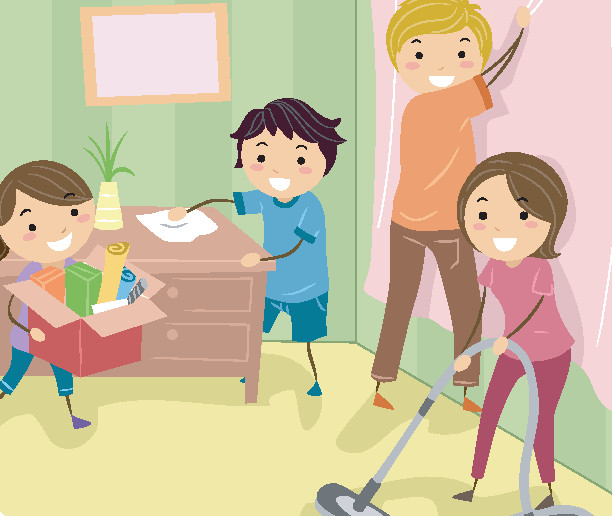
Are you in the habit of dumping things into junk drawers, without considering whether you’ll need them (or be able to find them) in a week? Do you save everything “just in case” it might come in useful “someday”? Does your family’s typical lifestyle include:
- Stuffing clothes so tightly into closets and drawers that everything comes out looking in need of a major ironing?
- Finding toys, tools, or knickknacks broken from shuffling around in a crowded drawer?
- Arriving in a last-minute rush because it took an extra twenty minutes to find everything you needed before leaving?
- Buying new adhesive tape/scissors/ballpoint pens even though you know twenty of them are already hiding somewhere around the house?
- Patching up bruises (or worse) after someone trips over, slips on, or bumps into something that was “in the way”?
- Draining the bank account with auto-payments on storage units that are filled with stuff no one ever misses?
Face it: too much “stuff” is more trouble than it’s worth, and if you live as described above, you’re not only making your own life unnecessarily difficult: you’re giving your children a bad example to follow. And you won’t have much success convincing them to get their toys out of your way (or to stop asking for more “stuff”) unless they see you practicing what you preach.
Get started now on creating a home environment where everything has a place and where no counter, table, couch, or floor is burdened by unnecessary clutter.
Clear It Out
Nearly every home benefits from periodic decluttering. If it’s been a while since you threw or gave anything away, set aside a weekend day (or a month of them) for a clear-it-out family project. Donate, sell, or dump anything that hasn’t been used in a year or that everyone has outgrown. Have a special family outing afterwards to celebrate your new freedom from clutter.
If your clutter problem is more serious—rooms are too full to walk through, there are major arguments over what should be kept—a professional organization service can be a worthwhile investment, not least for helping everyone see the situation objectively.
Nip It in the Bud
After initial decluttering is complete, beware lest the clutter creep back. If you establish the following habits as consistent practices in your household, you’ll also help your kids instill them for life:
- Have “a place for everything and everything in its place.” If every “place” is full, give away something for each new possession brought in.
- Permanently abstain from tossing things blindly into the nearest cabinet. Before you buy or keep anything, have a solid plan for how and when it’ll be used.
- Don’t place anything out in the open without having a specific practical or decorative use for it.
- Remember all the benefits of a clutter-free space: lowered stress levels, freedom to relax, a healthier environment.
Note to Teachers
If your own desk consistently looks as though it had been ransacked, your students will follow that example, and the whole classroom will become disorganized. How well do you model the principle of everything in its place and no more “everything” than needed?
HELPING CHILDREN LEARN THEIR PRIORITIES
Does it bother you to think how many school experiences are cluttered with overemphasis on standardized tests—at the expense of important life skills? Shady Oak Primary School has a better way! Our active, learn-by-doing program teaches kids what’s really needed for success and for personal impact on the world. We focus on real-life experience and instructing the whole child. Contact us with your questions!
Blessings to parents and children of all ages!


